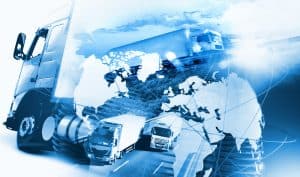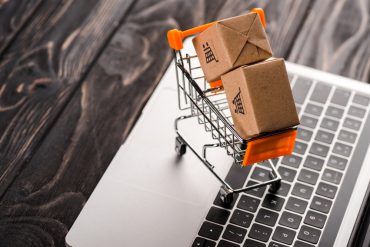
IoT data in transportation combined with machine learning and artificial intelligence can help make a supply chain transparent and efficient.
The global logistics market is growing, and technology is becoming the main trigger for development. Businesses are looking for IoT solutions for transportation that can help them to increase supply chain visibility, improve operations at every stage of logistics, and save resources. This can be achieved by collecting data about a logistics process using IoT devices and converting them into valuable business information. Let’s consider how the IoT in transportation creates a continuous flow of useful information so that companies get the most out of big data.
Download Now: Building Real-time Location Applications on Massive DatasetsHow the IoT turns data into value
Implementing the IoT in transportation is not just connecting equipment or sensors to the network. The IoT in transportation turns every object in the supply chain into a source of information. To use the collected information for the benefit of a business, you must be able to analyze big data in logistics and supply chain management. Unstructured information has no value. You need to understand how to work with data to develop your business.
Data becomes meaningful if they go through the collect-communicate-aggregate-analyze-act chain. IoT sensors collect and upload data to the cloud, where information is converted into a usable format and structured. “Purified” information becomes the basis for training ML algorithms that analyze data and automate some processes. ML and AI find patterns and make predictions. A logistics company gets full visibility into what’s going on in the supply chains.
See also: Dissecting a Supply Chain’s Digital Twin
What data are useful for logistics
In 2020, the logistics big data analytics market was valued at $3.55 billion. Experts suggest that by 2026 it will grow to $9.28 billion at an average annual growth rate of 17.31%. Organizations must be able to analyze the growing volume of incoming information and improve logistics operations.
The IoT in transportation solves the main problem, which is transparency and visibility of the supply chain. Traditionally, managers can only control the movement of goods at the points of shipment. It is impossible to establish what happens to the cargo between checkpoints.
Download Now: Building Real-time Location Applications on Massive DatasetsWithout transparency, it is difficult to understand under what conditions the goods are transported and whether the carrier fulfills the terms of the contract. It is also impossible to determine:
- where the cargo is located at a specific time;
- whether the goods are damaged (whether the packaging is airtight, whether the door of the container is closed, and so on);
- whether the conditions of transportation (temperature, humidity, and other indicators) are observed;
- what kind of weather or road accidents can prevent the timely delivery of goods;
- whether the carrier deviates from the route;
- whether the cargo will arrive on time, and other issues.
When this information is missing, the delivery is blind. The manager does not know where the problem is in the supply chain and how to fix it.
Access to the right data provides room for improvement. Sensors create a continuous IoT data flow and provide visibility into the supply chain.
See also: A Call for End-to-End Data Analytics Supply Chains
How a continuous IoT data flow works in logistics
IoT sensors are attached to packages, boxes, or containers with cargo. Devices collect information about the location of the package and its characteristics. They transmit information via GPS or mobile networks to a cloud application. This program can be used by members of the supply chain who are allowed access.
The cargo can be controlled from a distance at any time. To do this, you do not need to wait until the goods are delivered to their destination. The provider quickly fixes problems as they occur or prevents them. The IoT in transportation reduces the risks of supply chain disruption.
Big data in logistics and supply chain management can be used to:
- optimize routes;
- track the state of the cargo;
- evaluate the carrier’s work;
- manage door-to-door delivery;
- improve warehouse operations;
- minimize damage to goods during shipment;
- predict the demand for goods, etc.
Benefits of continuous IoT data flow in logistics
The IoT in transportation is the “eyes and ears” of supply chain managers. This is a sure way to gain a competitive edge and strengthen your position in the market. The benefits of the IoT for logistics are as follows:
Workflow optimization
The IoT creates a centralized network that helps to control the stages of the supply chain so that it works quickly and without failures. Based on data:
- suppliers adjust transportation schedules so that products reach the customer on time;
- carriers do not deviate from the route and monitor the quality of the cargo;
- terminal operators consider unloading so that the goods are not damaged;
- the customer sees when they receive the goods.
For a business, this means that the company will not lose money due to supply chain disruptions, maintain its reputation, and increase customer loyalty.
Improved demand prediction
IoT sensors find their way into every stage of the supply chain. IoT-based devices improve warehouse operations:
- they help to carry out inventory;
- they monitor inventory storage conditions;
- they find the location of the cargo;
- they solve the issue of overstocking the warehouse, predicting the demand for products based on archival data, and so on.
For the logistics industry, this means that there will be no delays in the first stage of the supply chain. Delays are usually due to the lack of goods in the warehouse or late loading of the truck because it is difficult to find products on the premises. If everything goes smoothly at the first stage, it will not provoke delays in the subsequent stages.
Elimination of the risk of transport breakdowns
Trucks, ships, and trains can break down on the way. This is a significant risk for the supply chain because the goods will not be delivered on time. You will need to provide additional assistance.
IoT sensors monitor vehicle status parameters and detect potential problems in advance. They tell you when it is best to do preventive maintenance so that the car, train, or ship does not break down along the way. They offer short routes and safe driving instructions to ensure that the goods arrive on time.
New business opportunities
With the help of the IoT, logistics companies are improving business models within the transport ecosystem. The IoT launches a mechanism for the continuous improvement of logistics processes. To implement new approaches, applications are needed that will unite supply chain participants into a single product ecosystem.
The IoT in transportation provides supply chain agility never seen before. With up-to-date data, applications will be able to set up individual delivery routes for specific customers.
How to implement the IoT in logistics
Implementing the IoT in transportation takes time and strategic action:
- identify problems in the supply chain;
- set goals for the implementation of the IoT;
- develop software for big data in logistics and supply chain management;
- install sensors and link them to a cloud-based monitoring application;
- train employees for the transition to a new format of work.
When planning the transition to IoT logistics, it is worth starting from business requirements. When you define digitalization goals, it will be easier to create a technology implementation roadmap. When employees are ready for changes, they will get to the point faster and make fewer errors. Only after that, you can create a real IoT ecosystem. The main thing is to find a reliable technology partner. A team of IT specialists can implement business requirements and create an IoT solution for transportation.
Conclusion
The IoT in transportation is the basis of the industry digitalization process. The data that IoT sensors collect is becoming a valuable source for the development of logistics. Together with ML and AI, this technology makes the supply chain transparent and efficient. By 2024, the global logistics market will double compared to 2015. It will amount to $15.5 trillion. This means that problems must be solved before they become catastrophic.
Download Now: Building Real-time Location Applications on Massive Datasets




























